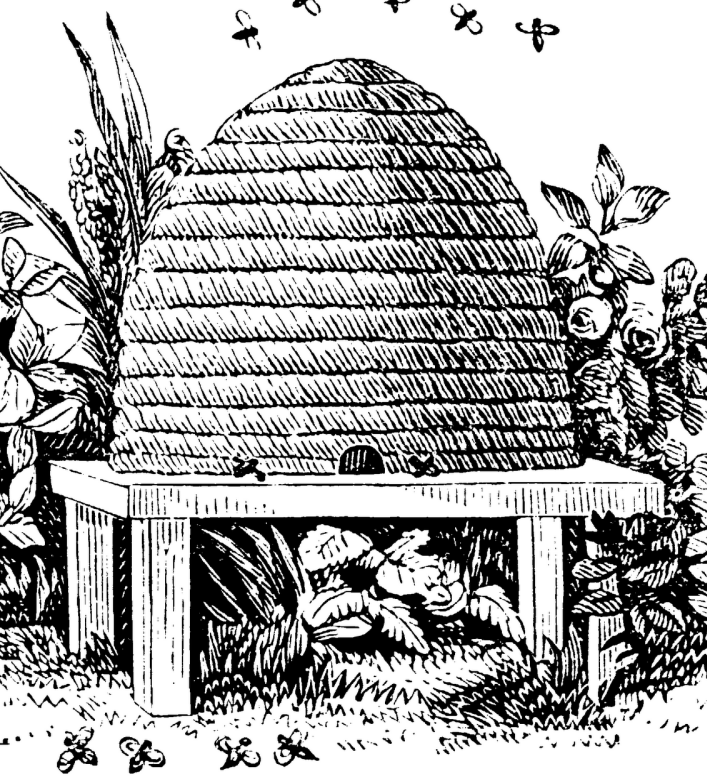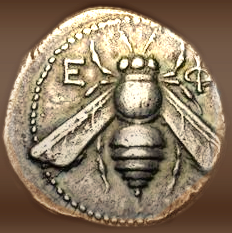Way back in the day, ancient Egypt and Mesopotamia were buzzing with beekeeping activity. These early cultures knew the value of bees, not just for their sweet honey, but for their mystical and medicinal powers.
In Egypt, beekeeping started as far back as 2400 BC. Bees played a huge role in both mythology and daily life. Imagine towering beehives and murals of honey collectors lining the walls of tombs, illustrating the key part bees had in sustaining life.
Mesopotamians also had a thing for bees, with their clay hives providing a home for these hardworking insects. The sumerians documented plenty about bees and honey on their clay tablets, acknowledging how crucial they were for food and medicine.

The influence of these ancient beekeepers goes beyond just farming. They were early innovators, creating systems and methods that laid the groundwork for future generations. Their success with bees showed a deep understanding of the natural world and the importance of nurturing it.
Highlighting these pioneering figures, their artifacts, and writings show us the start of humanity’s relationship with bees. These ancient innovators were the OG beekeepers, paving the way for an agricultural practice that still sweetens our existence today.
Classical Era Enthusiasts: Honey in Antiquity
The Greeks and Romans really knew how to appreciate the finer things in life, and honey was no exception. For them, it wasn’t just about having something sweet to smear on their bread. Honey had a place in medicine, religion, and as a staple in their culinary exploits, profoundly reflecting their view of the world.
Enter Aristotle, the ancient Greek philosopher who dove into observing bees like they were the most fascinating creatures alive. His keen insight and detective work laid the foundations for understanding bee behavior and their role within ecosystems. He was one of those thinkers who helped orchestrate a broader curiosity about the natural sciences.
Then there’s Virgil, the Roman poet, whose ‘Georgics’ gives us a peek into how beekeeping was perceived back in the day. These epic poems are an agriculture guide, combining practical advice with the grandeur of the poetic form, urging readers to respect and glean wisdom from the buzzing little critters.
In the Mediterranean world, bees weren’t just buzzing about minding their own business; they were part of grandeur festivities and rituals. Honey was a symbol of abundance and prosperity, showcasing just how intertwined these societies were with their environment.
Looking back at these eras, it’s evident how bees influenced important cultural and practical aspects of life. People in ancient times had a knack for recognizing the interconnectedness of nature long before the word ‘ecosystem’ was a thing. Their insights set the stage for centuries of beekeeping practices ahead.
Medieval Beekeepers: Guardians of Honey

Medieval Europe saw honey as more than just a sweetener—it was a commodity critical to both daily life and trade. In a time before sugar became common, honey waxed its way into just about everything, from medicine to preservation.
Monastic beekeepers were the quiet heroes of the time. Nestled within monastic gardens, hives were tended to by those dedicated to sustainable practices, not just out of necessity but as a form of spiritual stewardship. Beeswax was a precious material used in the making of church candles, a necessity for religious ceremonies.
Monasteries might not have been abuzz with chatter, but they were definitely buzzing with bees. These beekeeping monks compiled knowledge, developing beekeeping methods that emphasized care and intuition. Their ways marked an early form of agricultural responsibility and an understanding of ecological balance.
The medieval beekeepers were turning what the ancients handed down into practical solutions to meet their contemporary needs. They didn’t just maintain beekeeping but evolved it, ensuring the craft was preserved through tumultuous times.
This era set a strong foundation for beekeeping as both a science and an art. Reverence for nature’s design and the labor of bees became ingrained within cultural practices, an ethos that would carry forward into each subsequent age of human history.
The Renaissance Revival: Rediscovering Beekeeping
The Renaissance triggered a vibrant resurgence of interest in all things natural, and bees were right there, in the thick of it! This period was about rediscovering wisdom, and beekeeping was no exception.
One standout figure was Charles Butler, often dubbed the ‘Father of English Beekeeping’. His book, ‘The Feminine Monarchie’, was groundbreaking, shedding light on the life of bees with a fresh perspective. Butler championed the idea that the queen bee was indeed female—quite the revelation for those times!
Renaissance thinkers embraced experimentation and innovation, and beekeeping saw this in the design of hives and development of new practices. Beekeepers experimented with hive designs and honey harvesting techniques to maximize yield and bee health.
This era’s contribution to beekeeping literature expanded understanding and created practical guidebooks, providing a base that future generations could build upon. Literature and art flooded with references to bees, reflecting their growing cultural and economic importance.
The Renaissance stands as a renaissance in more ways than one. It wasn’t just about revisiting ancient ideas, but rather reimagining them, charting a course for modern agricultural thought.
19th Century Visionaries: Innovating for the Future
The 19th century was all about innovation, and in the world of beekeeping, it was a game-changer. As industries boomed and technology advanced, so did the tools and techniques used by beekeepers.
Lorenzo Langstroth stands out with his invention of the movable-frame hive, a revolutionary design that made beekeeping more efficient and less disruptive to the bees. This innovation laid the groundwork for modern beekeeping practices and spurred further interest in bee science.
François Huber, although blind, contributed significantly by studying the behavior of bees. His meticulous observations resulted in ‘New Observations on Bees’, a work that illuminated complex bee behaviors and inspired future beekeepers to approach hives with a scientific mindset.
The period was marked by a flurry of technological discoveries, with beekeepers inventing new equipment and methodologies to enhance productivity and bee health. These advances weren’t just about increasing honey output, but ensuring the wellbeing of the bee colonies themselves.
The industrious spirit of the 19th century matched the industriousness of bees, with inventors and naturalists drawing parallels between bees’ societal structures and human industry. Their inventive strides ensured bees remained quintessential contributors to agriculture and beyond, fostering awareness of their pivotal environmental role.
20th Century Beekeeping: Balance and Industrial Innovation
With the turn of the century, beekeeping had to balance tradition with the demands of a rapidly industrializing world. As machinery and mass production took hold, beekeepers adapted, translating the age-old craft into a commercial powerhouse.
The 20th century saw the rise of industrial-scale beekeeping, driven by the agricultural boom and increased global trade. Beekeepers geared up, shifting to a model that supported large-scale crop pollination, a crucial factor in feeding an ever-growing population.
Challenges were plentiful, especially through the world wars. Beekeepers faced shortages of resources and had to develop resilient techniques to sustain their practices during tough times. Innovation didn’t halt, even in adversity; it evolved, proving the adaptability of the trade.
One standout figure was Brother Adam, a Benedictine monk who revolutionized bee breeding with his development of the Buckfast bee. Renowned for resilience and productivity, these bees demonstrated how genetic diversity could improve both honey yield and bee health, combating issues like disease and pestilence.
The century was also about awareness—scientists and beekeepers began to recognize bees’ invaluable role in biodiversity. The conversation around conservation started to take shape, moving beekeeping into a dual role of production and preservation.
By the end of the century, beekeepers were not just honey producers but stewards of ecological balance, prepared to address modern challenges with a forward-thinking approach. The 20th century solidified the place of bees in an industrial age, shaping practices still in use today.
Contemporary Beekeepers: Guardians of Tomorrow’s Ecosystem
Today, beekeeping is more vital than ever. With environmental issues like climate change and Colony Collapse Disorder (CCD) knocking at our door, beekeepers find themselves on the frontline of ecological guardianship.
Modern beekeepers face challenges that require innovation and a deep understanding of both bees and global environmental health. It’s about striking a balance between production and preservation, making sure our buzzing buddies thrive.
Leading figures in contemporary beekeeping advocate fiercely for bees. These champions work tirelessly to raise awareness about the threats bees face while pushing for policies and practices that protect bee populations.
Urban beekeeping is one of the most exciting developments in this era. City dwellers are tapping into the flow, setting up rooftop hives and turning urban spaces into bee-friendly environments. It’s a testament to how adaptable and resilient beekeeping can be, even amidst urban jungles.
Sustainability is at the heart of it all. Beekeepers today aren’t just about maintaining their hives; they are actively engaged in efforts to ensure bees continue to pollinate the planet. It’s about creating a thriving future, one beehive at a time.
Contemporary innovations in technology, such as AI and data monitoring, are propelling the aged art toward new horizons. These tools allow beekeepers to monitor hive health and productivity in real-time, providing insights that can help safeguard our precious pollinators.
Today’s beekeepers are informed, motivated, and ready to nurture tomorrow’s ecosystem. They truly embody the spirit of community and sustainability, showing that while the world changes, the close bond between humans and bees remains unwavering.
